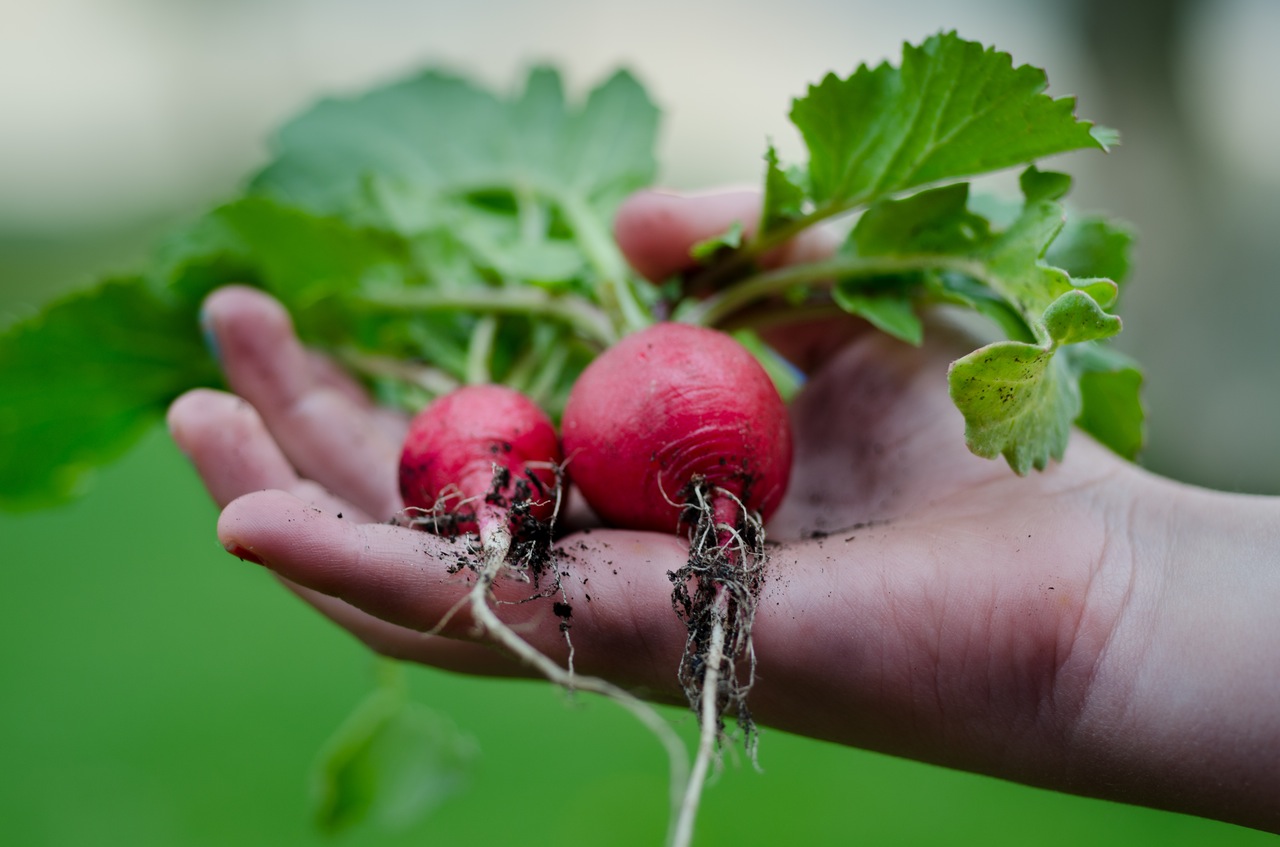Naturally Sweet Radishes
Radishes fall into the cruciferous vegetable family. Don’t know what that is? Well, you should! Cruciferous vegetables may be best known for helping to prevent against cancerand supporting liver detox. Cruciferous vegetables include broccoli, cauliflower, Brussels sprouts, and kale to name just a few.
You should consume your radishes (and other cruciferous vegetables) in both raw and cooked forms. Here’s why:
1) Raw:
Crucifers contain an enzyme, myrosinase, which is responsible for catalyzing a reaction that results in the formation of biologically active compounds that our body can use to its benefit. Below are examples of two types of glucosinolates (precursor compounds) and their activated form that are under investigation for their cancer-fighting properties:
Glucobrassicin–>Indole-3-Carbinol
Glucoraphanin–>Sulforaphane

Here’s the catch… chopping or chewing raw cruciferous vegetables turns on the enzyme activity. You are more likely to increase your absorption of the activated compounds if you consume crucifers in a chopped form and chew thoroughly.
2) Cooked:
Although heat may significantly diminish the activity of the myrosinase enzyme, human intestinal bacteria has the same myrosinase activity and can allow for some formation and absorption of isothiocyanates. This is one suggestion for why cruciferous vegetables are thought to prevent against colon cancer. Another reason to a consume cooked versions of crucifers is due to their goitrogenic effects. When I say goitrogenic, I am referring to a food that can impair the body’s uptake of iodine and interfere with the function of the thyroid gland. Don’t get me wrong, you can still safely consume raw crucifers (and you should), but if you are one of those people who just LOVE eating them in larger quantities and often, I would recommend a balance of both cooked and raw forms. One reason for cooking crucifers is because heat will reduce the goitrogenic activity of the compounds.
So, that’s just a few reasons why radishes are so rad.
You can incorporate raw radishes in your diet by simply snacking on them, or throwing them into a salad. In raw form, radishes are crispy and naturally spicy. In cooked form radishes taste completely different — they are sweet! I love pairing sauteed radishes with my eggs for breakfast, or as a random side to a lunch or dinner protein.
Below is a simple, easy recipe that will transform your radishes into naturally sweet pink edible gems! Let me know what you think!

References:
About the Author
Audrey Fleck - MS, RDN, LDN
I’m Audrey Fleck, a dedicated dietitian with over a decade of experience, and the founder of Functional Origins, my private practice located in Bucks County, PA. With a strong educational background, including a BS in Nutrition and Dietetics and an MS in Human Nutrition and Functional Medicine, I specialize in providing an integrative and functional approach to healing, primarily tailored for women.



